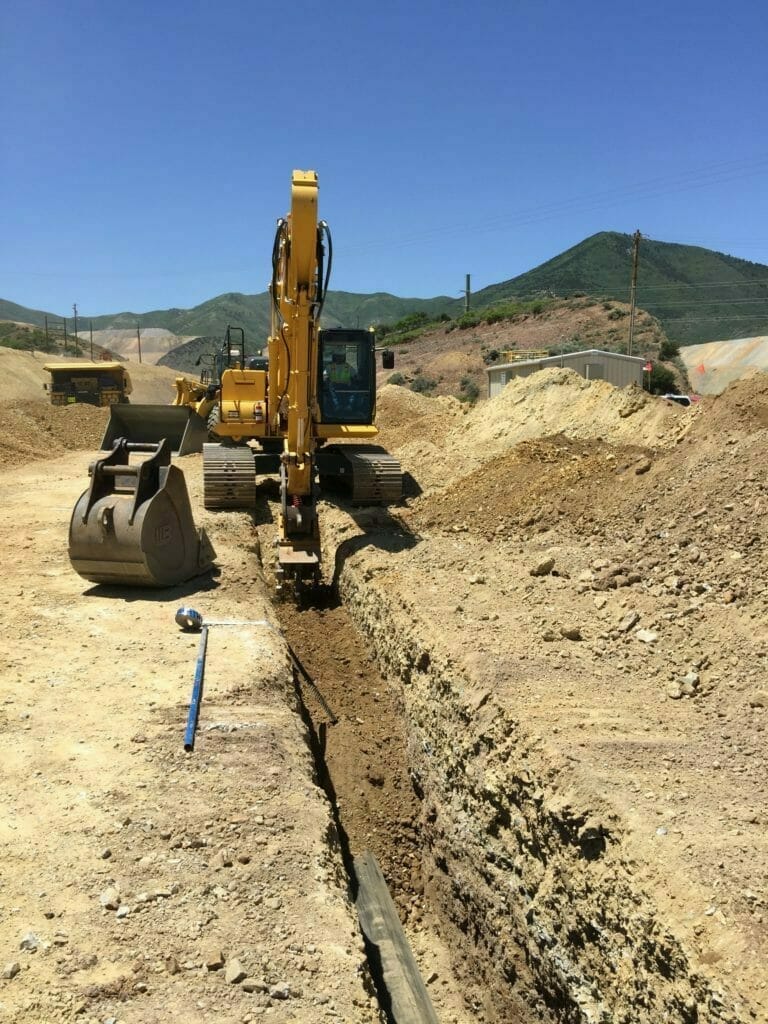The Demolition Statements
Wiki Article
The Greatest Guide To Grading Contractors
Table of ContentsHow General Contractor can Save You Time, Stress, and Money.Fascination About Excavating ContractorsEverything about DemolitionSome Known Facts About Concrete Contractors.Facts About Mini Excavator Uncovered


Scrapers or Pans dig deep into dirt in one place, haul and unload the soil in one more place (excavation companies). It is hard to match the efficiency of scrapes for cut/fill dirt operation if the haul range is less after that a mile. Scrapes are normally pulled by a rubber tire wheel tractor as well as are sometimes pushed with the cut area by an excavator.
There are several times that scrapes are not used for site grading and a dump truck is employed: the haul might be to long, the haul may go across roadways where scrapes are not allowed, tough rock might be run into, equipment accessibility, etc. Discard trucks remain in typical use as well as probably require little conversation.
Lots of vehicles have a top-hinged tailgate that can not dump any kind of rock broader after that the tailgate width. "Rock body" beds, on the other hand, have no tailgates and can discard any kind of size rock, although their volume capacity is diminished. These web links reveal tools specs for numerous common dump vehicles. Compaction Devices boosts the density of the dirt as well as in many cases provides a smooth, rolled surface.
Unknown Facts About Concrete Contractors
From an easy test pit to percussion boring to core boring the proprietor has significantly a lot more costly choices that produce progressively much better information about the website underground. For instance, the Owner on a 100,000 SF building project may license twenty dull locations with split spoon soil examples taken until rock is reached and after that core examples of rock.Understanding the type and high quality of rock (from the core samples) and area of rock (from the dirts boring) is a real benefit in jobsite planning. On the other hand, the Owner of a 100,000 SF building might determine to wage no geotechnical testing whatsoever. The choice regarding geotechnical testing is typically made by an Owner with no input from the Building and construction Manager.
The area on Dirts and also Geology helps you understand the terms in the geotechnical record. A knowledge of the approximate location of the rock helps the Construction Manager to prepare the series of steps following rock excavation. If rock remains in one edge of a huge structure job, as an example, the planet excavation can start at the contrary end of the structure in order to start structure work soonest.
Beginning the foundation work early would be a good concept if the rock might be gotten rid of by tearing. Nevertheless, if the rock is very hard and requires considerable blasting, it might be sensible to hold foundation job until the blasting is finished. The Building and construction Manager should collaborate these kinds of decisions as well as use all the technical date readily available.
Little Known Facts About Demolition.
Unidentified excavation stipulates that all rock or various other unanticipated materials (omitting harmful products) come across in the sitework will certainly be the obligation of the Service provider at no modification in contract cost. An unidentified excavation is easier from a book-keeping point ofview and places the obligation for geotechnical problems onto the Sitework Professional.Just How Water Affects Sitework? It's remarkable what a hefty rain can do to a building task. Before the rainfall, the website may be dry, heavy equipment effectively moving earth, the various other professions efficiently executing their work. Within hrs the project can be a careless, mud-hole with employee efficiency reduced to about 10%.
In most areas of the globe, the Building and construction Manager have to keep in mind an easy reality: IT WILL RAIN. Good planning can decrease the damages as well as disruption of a hefty rainfall to a jobsite. Typically the excavation and also grading is delegated the Sitework Specialist (as his explanation well as their Foremen is liable to oversee and also direct the hefty devices and drivers).
Therefore the Building Manager have to be continuously knowledgeable about what rain will do to the task site. It is not unusual for the Sitework Foreman to function their hefty equipment for maximum effectiveness as well as wish it does not rain. Among the very best methods to get ready for rain is to slope all grades to drain and to smooth rolled the surface prior to a rainfall.
What Does Mini Excavator Do?
The Building and construction Manager need to be well-balanced adequate to insure that heavy rain does not stop work on the task much longer than necessary. Daily discussions with Sitework Foremen may be called for to accomplish this objective. At any time excavation is required listed below the existing water level on a job, the procedure of dewatering need to be taken into consideration.In an absolutely cohesive dirt, the water takes a trip so slowly via the clay or silt that dewatering is not generally required for the fairly short time of excavation. Dewatering might be needed for a single footing excavation or for an entire task site. One of the most common dewatering techniques are trench drains pipes, deep wells and also well points.

Ground water infiltration can additionally be lowered by cutoff techniques such as sheet loading. The expenses for dewatering can be astonishing, including tools rental, labor and also electrical energy (or fuel). High dewatering prices have actually faded the earnings margins on far a lot of tasks. The many variables listed here make the job of estimating dewatering costs extremely hard, and really inexact.
This alternative ought to always be considered when examining the prospect what is excavation of dewatering. Clearly the choice is just sensible if gravity can run the water to lower ground. Trench drains pipes can be reduced with a backhoe and loaded with a crude, granular material (# 4 stone as an example), but treatment has to be exercised in selecting the water outlet type and also place.
Little Known Questions About Excavating Contractors.
A siphon, by interpretation, makes use of climatic stress to carry water from one elevation, up over an obstacle, to a lower altitude. The pipelines in a siphon system need to be closed and also some resourcefulness is frequently needed to entirely load the siphon pipeline. The siphon pipe should be complete for the siphon to begin.A deep well contains a pump, tube and an upright well casing. The pump intake is at the bottom of the well housing (usually some crushed stone is put there as a filter medium) (concrete contractors). The water is pumped up the hose pipe, out of the well casing, and to a suitable discharge place.
In a rugged sand, as an example, a huge location can be pumped to near the pump consumption elevation. A much less absorptive dirt, on the various other hand, lowers the performance look these up of a deep well. Since the pump is usually at the base of the deep well, there are no height limitations as a result of vacuum lift, and also deep wells can lower the groundwater over 50 feet.
On the bottom of the wellpoint there is a 2 foot long screen and shutoff, water jets out of this shutoff and also creates an opening into which the wellpoint pipe can be reduced. This hole is frequently made a bigger size (for instance 10 inches) to allow for a crude sand backfill to assist filter the water (mini excavator).
Report this wiki page